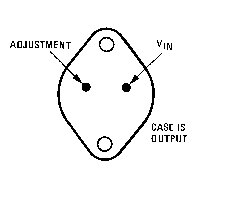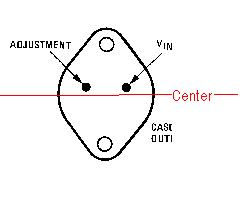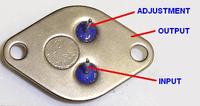Qaisar Azeemi
Full Member level 5
- Joined
- Feb 11, 2011
- Messages
- 315
- Helped
- 16
- Reputation
- 32
- Reaction score
- 15
- Trophy points
- 1,298
- Location
- Peshawar, Pakistan, Pakistan
- Activity points
- 3,829
Hi;
I am designing a power supply circuit using LM317 or LM338 voltage regulators. The problem occuring at the point when i connect a 2.7k resistor at the output which drop the voltages adjusted by the variable resistor between adjust pin and ground.
for example; i adjust 6.5v at the out put seen at the screen of digital meter. now when i connect 2.7k at out put of IC that is with the probs of meter, the voltages drop down to 3.8V but when i connect 10k it drops to 5.4V. i know very well that on load voltages will always drop then rated...........
but
the confusion is that to get 5V onload out put what should be the voltage across output of IC without load?
my specifications for supply are as follows:
5A supply that provides out puts of 5v, 9v, 12v and 19.5v.
i amd using LM338k with 2.9k ohms resistor between output and adjust pins.
i am using a variable resistor and digital multimeter to adjust the out put and to find the value of resistors that should be connected at the place of variable resistor to get required voltage.
Expert suggestions and guidance is required.
Thank you
I am designing a power supply circuit using LM317 or LM338 voltage regulators. The problem occuring at the point when i connect a 2.7k resistor at the output which drop the voltages adjusted by the variable resistor between adjust pin and ground.
for example; i adjust 6.5v at the out put seen at the screen of digital meter. now when i connect 2.7k at out put of IC that is with the probs of meter, the voltages drop down to 3.8V but when i connect 10k it drops to 5.4V. i know very well that on load voltages will always drop then rated...........
but
the confusion is that to get 5V onload out put what should be the voltage across output of IC without load?
my specifications for supply are as follows:
5A supply that provides out puts of 5v, 9v, 12v and 19.5v.
i amd using LM338k with 2.9k ohms resistor between output and adjust pins.
i am using a variable resistor and digital multimeter to adjust the out put and to find the value of resistors that should be connected at the place of variable resistor to get required voltage.
Expert suggestions and guidance is required.
Thank you



